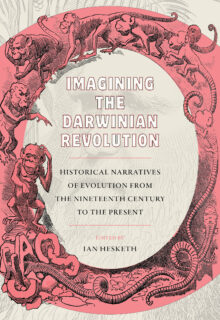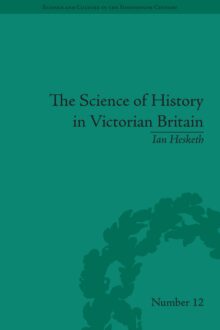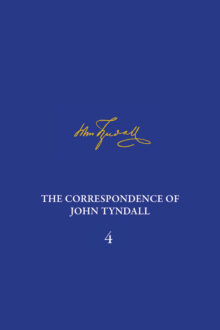

Ian Hesketh
Ian Hesketh is associate professor of history at the University of Queensland. He is an intellectual historian and historian of science. He has written extensively on the history of evolution, the history of historical writing, the philosophy of history, and the history of religious thought.
Imagining the Darwinian Revolution
Historical Narratives of Evolution from the Nineteenth Century to the Present
This volume considers the relationship between the development of evolution and its historical representations by focusing on the so-called Darwinian Revolution. The very idea of the Darwinian Revolution is a historical construct devised to help explain the changing scientific and cultural landscape that was ushered in by Charles Darwin’s singular contribution to natural science. And yet, since at least the 1980s, science historians have moved away from traditional “great man” narratives to focus on the collective role that previously neglected figures have played in formative debates of evolutionary theory. Darwin, they argue, was not the driving force behind the popularization of evolution in the nineteenth century. This volume moves the conversation forward by bringing Darwin back into the frame, recognizing that while he was not the only important evolutionist, his name and image came to signify evolution itself, both in the popular imagination as well as in the work and writings of other evolutionists. Together, contributors explore how the history of evolution has been interpreted, deployed, and exploited to fashion the science behind our changing understandings of evolution from the nineteenth century to the present.
The Science of History in Victorian Britain
Making the Past Speak
New attitudes towards history in nineteenth-century Britain saw a rejection of romantic, literary techniques in favour of a professionalized, scientific methodology. The development of history as a scientific discipline was undertaken by several key historians of the Victorian period, influenced by German scientific history and British natural philosophy. This study examines parallels between the professionalization of both history and science at the time, which have previously been overlooked. Hesketh challenges accepted notions of a single scientific approach to history. Instead, he draws on a variety of sources—monographs, lectures, correspondence—from eminent Victorian historians to uncover numerous competing discourses.
The Correspondence of John Tyndall, Volume 4
The Correspondence, January 1853–December 1854
The 329 letters in this volume represent a period of immense transition in John Tyndall’s life. A noticeable spike in his extant correspondence during the early 1850s is linked to his expanding international network, growing reputation as a leading scientific figure in Britain and abroad, and his employment at the Royal Institution. By December 1854, Tyndall had firmly established himself as a significant man of science, complete with an influential position at the center of the British scientific establishment.
Tyndall’s letters throughout the period covered by this volume provide great insight into how he navigated a complicated course that led him into the upper echelons of the Victorian scientific world. And yet, while Tyndall was no longer as anxious about his scientific future as he was in previous volumes of his correspondence, these letters show a man struggling to come to terms with his newfound status, a struggle that was often reflected in his obsession with maintaining an “inflexible integrity” that guided his actions and deeds.



